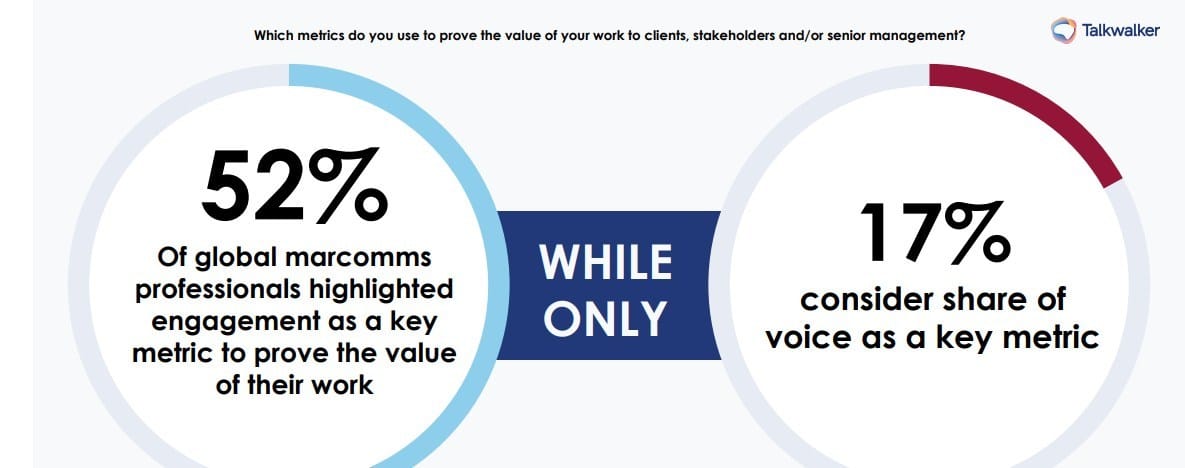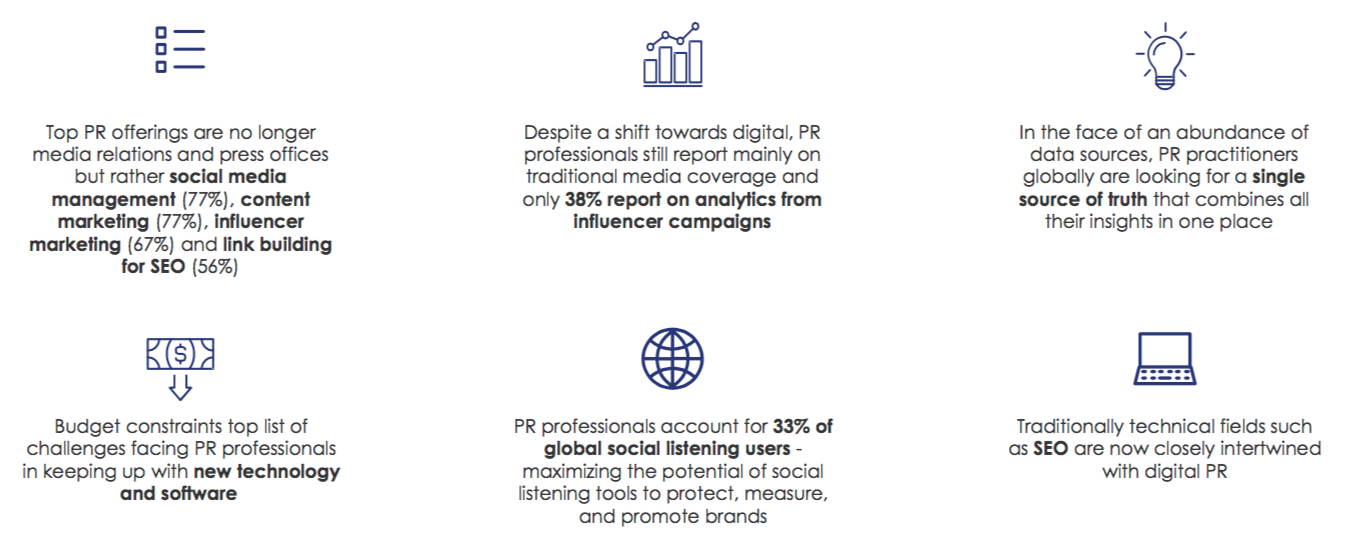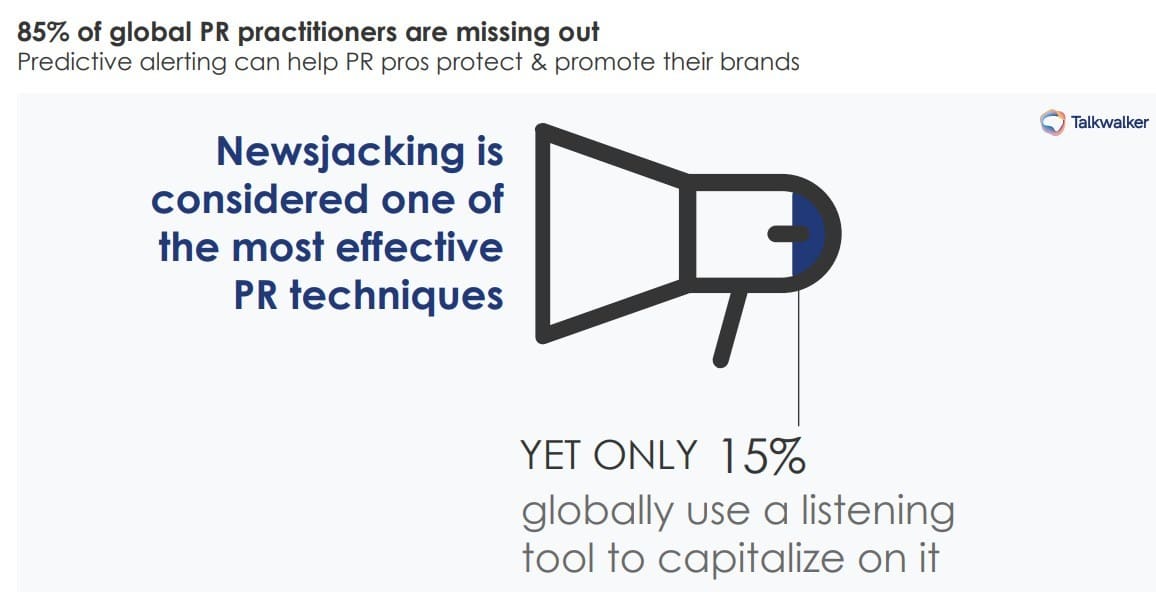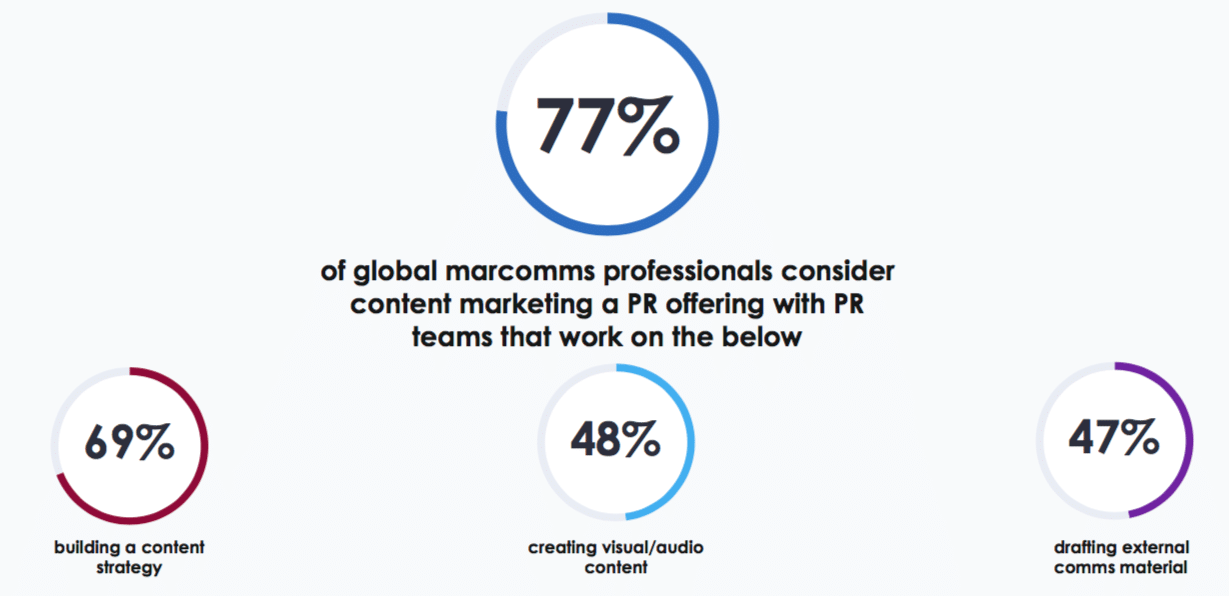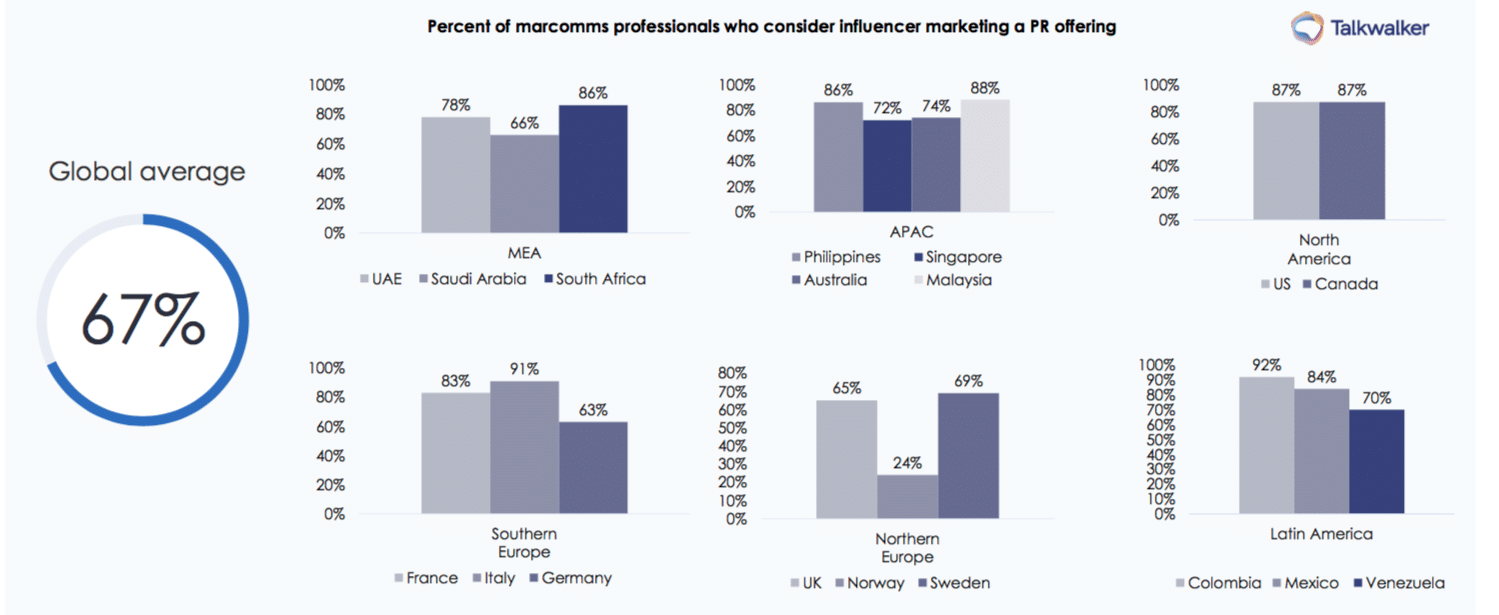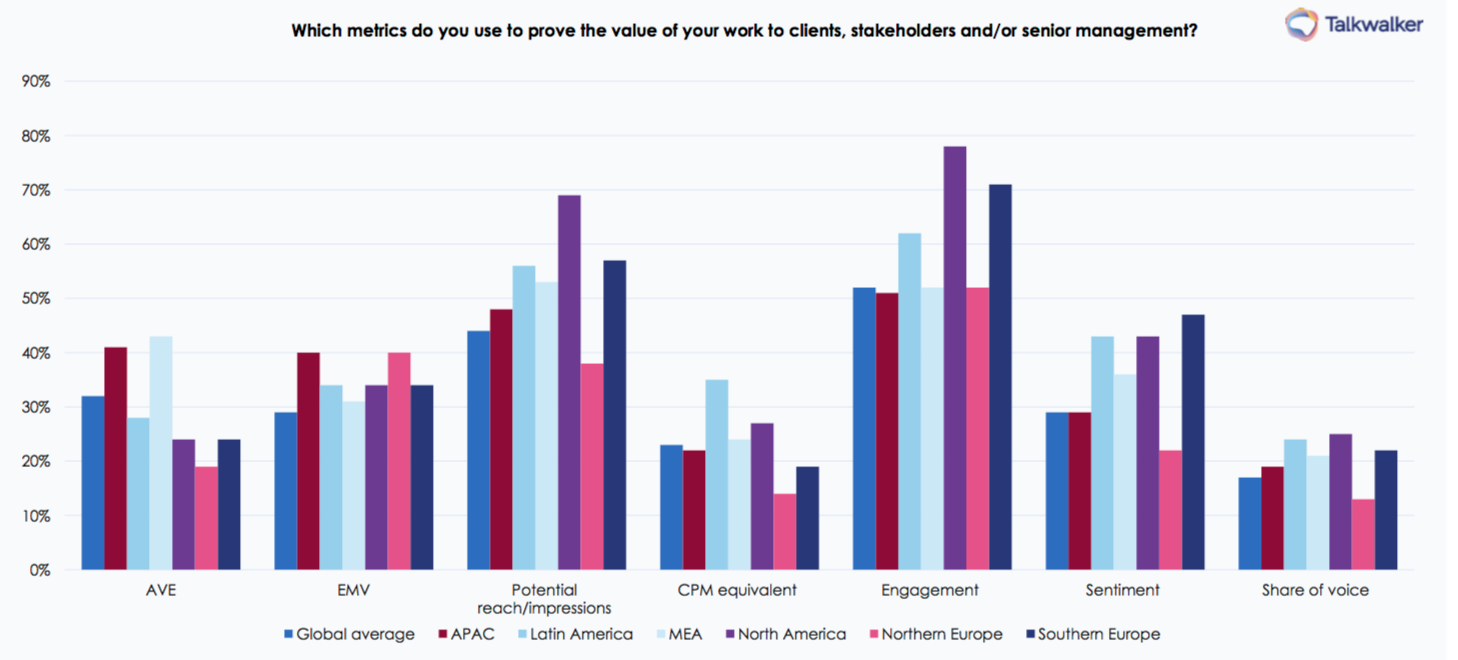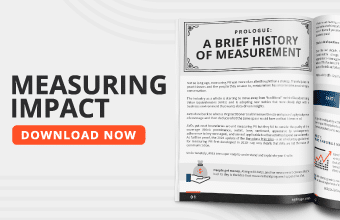The public relations industry will certainly have its hands full in 2020—on top of new challenges such as deeper comms integration and managing client reputations in a more distrustful consumer environment, there’s all the election noise that PR pros will be battling against to earn media placements. If ever there was a time to bolster your department or firm with the right tools, it’s now.
New research from social listening and analytics firm Talkwalker, in partnership with market research and data analytics firm YouGov, outlines key areas where PR pros can unlock a competitive advantage this year. The firms’ new Global State of PRreport reveals how different regions define “PR” and how communication departments cannot afford to be siloed anymore.
Embracing social listening and newsjacking
In addition, it highlights the different ways in which PR professionals use social listening tools in their day-to-day work, and which metrics they currently measure—revealing that they are creating significant value in their role by increasingly embracing social listening for media management, influencer marketing, and real-time online crisis and reputation management.
The global adoption of social listening and analytics in the industry was reported at 48 percent.
Countries with the highest reported use of social listening tools include France (75 percent), Italy (72 percent), United States (71 percent), South Africa (71 percent), and India (68 percent). Conversely, Sweden (25 percent) and Norway (28 percent) reported the least use.
PR professionals are now more ‘social’ than ever:
While nearly half of PR professionals globally confirmed that their companies use social listening tools, only 15 percent of them utilize them for newsjacking—a huge missed opportunity, considering newsjacking is widely considered to be a PR technique that can drive mass coverage and influence sales in a measurable way.
Integration opportunities
The global users of social listening tools in the marcomms industry have traditionally been social media managers and data analysts—but PR account managers, executives, coordinators, directors, and vice presidents together accounted for 33 percent of global users, according to the research.
These elements of content marketing are now considered a PR offering:
This represents an interesting development for the PR industry as it maximizes the potential of social listening to protect, measure & promote brands. Shockingly, however, the report also revealed that C-level executives account for only 8 percent of global users of social listening tools in the industry—despite reputation and crisis management being critical to this role in the PR industry.
Influencer marketing shifts
Finally, as influencer marketing has evolved into a key opportunity for marketers today—worth up to $10 billion in 2020—it may be surprisingly that the survey found the industry is not actually dominated by Instagram. For B2C influencer campaigns, 70 percent of PR professionals used Facebook to engage with influencers, compared to 68 percent using Instagram. The gap is even higher when it comes to B2B influencer campaigns, with 65 percent of PR professionals collaborating with influencers on Facebook and 53% on Instagram. PR professionals were also quick to jump on the fairly new social media platform, TikTok, with 8 percent using it for B2C influencer campaigns and 4 percent for B2B influencer campaigns.
Influencer marketing is also widely recognized as a PR offering:
“The PR landscape has certainly undergone a lot of changes to keep up with today’s shift to digital,” said Todd Grossman, Talkwalker CEO Americas, in a news release. “It is a very exciting time for the industry with plenty of untapped potential for PR professionals to go fully social and unlock the huge benefits that social PR strategies could offer.”
Vanity metrics still used to prove value of PR work to stakeholders:
Download the full report here.
Talkwalker and YouGov gathered data from 3,700 marketing and communications professionals based in the United States, Europe, Africa, Asia-Pacific, Latin America and the Middle East to release new research about the industry.


